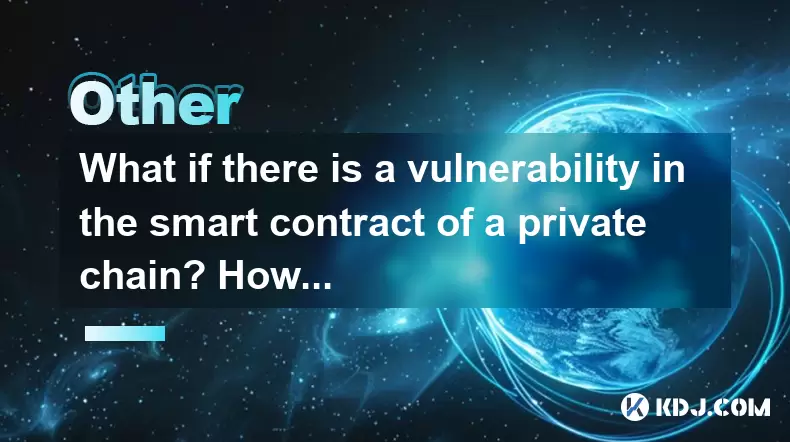-
 Bitcoin
Bitcoin $117800
0.49% -
 Ethereum
Ethereum $4432
0.55% -
 XRP
XRP $3.106
1.07% -
 Tether USDt
Tether USDt $1.001
0.01% -
 BNB
BNB $835.8
1.74% -
 Solana
Solana $189.1
2.72% -
 USDC
USDC $0.9999
-0.01% -
 Dogecoin
Dogecoin $0.2302
3.65% -
 TRON
TRON $0.3485
-0.69% -
 Cardano
Cardano $0.9212
-0.91% -
 Hyperliquid
Hyperliquid $46.97
1.45% -
 Chainlink
Chainlink $22.77
5.61% -
 Stellar
Stellar $0.4284
0.82% -
 Sui
Sui $3.766
2.82% -
 Bitcoin Cash
Bitcoin Cash $583.5
-0.82% -
 Ethena USDe
Ethena USDe $1.001
0.03% -
 Hedera
Hedera $0.2512
2.78% -
 Avalanche
Avalanche $24.18
2.27% -
 Litecoin
Litecoin $120.2
2.10% -
 Toncoin
Toncoin $3.450
1.96% -
 UNUS SED LEO
UNUS SED LEO $9.412
-0.92% -
 Shiba Inu
Shiba Inu $0.00001298
2.35% -
 Uniswap
Uniswap $10.99
3.75% -
 Polkadot
Polkadot $3.962
3.09% -
 Dai
Dai $1.000
0.00% -
 Bitget Token
Bitget Token $4.643
1.38% -
 Cronos
Cronos $0.1511
-0.08% -
 Ethena
Ethena $0.7246
3.18% -
 Monero
Monero $254.9
7.90% -
 Pepe
Pepe $0.00001100
3.32%
What if there is a vulnerability in the smart contract of a private chain? How to fix it?
Smart contract vulnerabilities in private chains can be identified using automated tools and manual reviews, assessed for impact, and fixed with careful planning and testing.
May 15, 2025 at 08:02 pm

Introduction to Smart Contract Vulnerabilities in Private Chains
Smart contracts are self-executing programs that run on blockchain technology, designed to automate transactions and enforce agreements. While they offer numerous benefits, such as transparency and immutability, they are not immune to vulnerabilities. When a vulnerability is found in the smart contract of a private chain, it poses a significant risk to the integrity and security of the network. In this article, we will explore the steps to identify, assess, and fix these vulnerabilities.
Identifying Vulnerabilities in Smart Contracts
The first step in addressing a vulnerability is to identify it. This process often involves a combination of automated tools and manual code reviews. Automated tools, such as static analysis programs, can scan the smart contract code for known vulnerabilities. Tools like Mythril and Slither are popular choices for Ethereum-based smart contracts. Additionally, manual code reviews by experienced developers can uncover issues that automated tools might miss.
- Use automated tools to scan the smart contract code.
- Conduct manual code reviews to identify subtle vulnerabilities.
Assessing the Impact of the Vulnerability
Once a vulnerability is identified, it is crucial to assess its impact on the private chain. This assessment helps determine the urgency and the scope of the fix. The severity of the vulnerability can range from minor issues that do not affect the chain's operation to critical flaws that could lead to data breaches or unauthorized access.
- Evaluate the severity of the vulnerability.
- Determine the potential impact on the private chain's operations and security.
Planning the Fix
After assessing the vulnerability, the next step is to plan the fix. This involves developing a strategy to address the issue without disrupting the chain's operations. The plan should include a detailed timeline, resource allocation, and a rollback strategy in case the fix introduces new issues.
- Develop a detailed timeline for the fix.
- Allocate necessary resources to implement the fix.
- Prepare a rollback strategy to handle potential new issues.
Implementing the Fix
Implementing the fix requires careful execution to ensure that the vulnerability is addressed without introducing new problems. This typically involves modifying the smart contract code, testing the changes in a controlled environment, and deploying the updated contract to the private chain.
- Modify the smart contract code to address the vulnerability.
- Test the changes in a controlled environment to ensure they work as expected.
- Deploy the updated contract to the private chain.
Testing and Validation
After implementing the fix, thorough testing and validation are essential to confirm that the vulnerability has been resolved and that no new issues have been introduced. This process should include both automated testing and manual validation to cover all possible scenarios.
- Conduct automated testing to verify the fix.
- Perform manual validation to ensure the smart contract functions correctly.
Monitoring and Continuous Improvement
Even after fixing a vulnerability, it is important to monitor the smart contract and the private chain for any signs of new issues. Continuous monitoring and regular audits can help maintain the security and integrity of the network.
- Monitor the smart contract for any new vulnerabilities.
- Conduct regular audits to ensure ongoing security.
Frequently Asked Questions
Q: Can vulnerabilities in smart contracts be completely eliminated?
A: While it is impossible to completely eliminate vulnerabilities, diligent development practices, regular audits, and continuous monitoring can significantly reduce the risk.
Q: How can I ensure that my team is prepared to handle smart contract vulnerabilities?
A: Training your team in smart contract development, security best practices, and vulnerability management is crucial. Additionally, staying updated with the latest security tools and techniques can enhance preparedness.
Q: What are some common types of smart contract vulnerabilities?
A: Common vulnerabilities include reentrancy attacks, integer overflow and underflow, and improper access control. Understanding these can help in developing more secure smart contracts.
Q: Is it possible to fix a smart contract vulnerability without redeploying the contract?
A: In some cases, it is possible to fix vulnerabilities through upgrades or patches, depending on the smart contract's design. However, redeploying the contract is often the safest approach to ensure all vulnerabilities are addressed.
Disclaimer:info@kdj.com
The information provided is not trading advice. kdj.com does not assume any responsibility for any investments made based on the information provided in this article. Cryptocurrencies are highly volatile and it is highly recommended that you invest with caution after thorough research!
If you believe that the content used on this website infringes your copyright, please contact us immediately (info@kdj.com) and we will delete it promptly.
- Kazakhstan's Crypto Leap: Bitcoin ETF and Central Asia's Digital Finance Future
- 2025-08-13 12:45:19
- BlockDAG Presale Blazes Past $371M: Fundraising Frenzy Fuels Crypto Sensation
- 2025-08-13 13:05:21
- Meme Coins: Chasing the 2025 Surge – Which Will Moonshot?
- 2025-08-13 10:25:23
- Bitcoin's Wild Ride: Rally, Pullback, and What's Next
- 2025-08-13 10:25:23
- Bitcoin, Bitmax, and Institutional Demand: A New Era of Crypto Investment
- 2025-08-13 10:45:12
- Solana, ROAM, and Airdrops: What's the Buzz in 2025?
- 2025-08-13 11:35:13
Related knowledge

How does blockchain enable Web3?
Aug 13,2025 at 11:35am
Understanding the Role of Blockchain in Web3 InfrastructureBlockchain serves as the foundational layer upon which Web3 is built, enabling a decentrali...

How is a CBDC different from cryptocurrency?
Aug 12,2025 at 09:21am
Understanding the Core Nature of CBDCsA Central Bank Digital Currency (CBDC) is a digital form of a country’s sovereign currency, issued and regulated...

What is a CBDC (Central Bank Digital Currency)?
Aug 13,2025 at 11:36am
Understanding the Concept of a Central Bank Digital CurrencyA CBDC (Central Bank Digital Currency) is a digital form of a country’s fiat currency that...

How can zero-knowledge proofs enhance privacy on a blockchain?
Aug 12,2025 at 02:15am
Understanding Zero-Knowledge Proofs in Blockchain ContextZero-knowledge proofs (ZKPs) are cryptographic protocols that allow one party (the prover) to...

How does blockchain governance work?
Aug 13,2025 at 11:35am
Understanding Blockchain GovernanceBlockchain governance refers to the mechanisms and processes through which decisions are made about the development...

What is on-chain vs. off-chain data?
Aug 13,2025 at 11:35am
Understanding On-Chain Data in CryptocurrencyOn-chain data refers to all information that is permanently recorded and stored directly on a blockchain....

How does blockchain enable Web3?
Aug 13,2025 at 11:35am
Understanding the Role of Blockchain in Web3 InfrastructureBlockchain serves as the foundational layer upon which Web3 is built, enabling a decentrali...

How is a CBDC different from cryptocurrency?
Aug 12,2025 at 09:21am
Understanding the Core Nature of CBDCsA Central Bank Digital Currency (CBDC) is a digital form of a country’s sovereign currency, issued and regulated...

What is a CBDC (Central Bank Digital Currency)?
Aug 13,2025 at 11:36am
Understanding the Concept of a Central Bank Digital CurrencyA CBDC (Central Bank Digital Currency) is a digital form of a country’s fiat currency that...

How can zero-knowledge proofs enhance privacy on a blockchain?
Aug 12,2025 at 02:15am
Understanding Zero-Knowledge Proofs in Blockchain ContextZero-knowledge proofs (ZKPs) are cryptographic protocols that allow one party (the prover) to...

How does blockchain governance work?
Aug 13,2025 at 11:35am
Understanding Blockchain GovernanceBlockchain governance refers to the mechanisms and processes through which decisions are made about the development...

What is on-chain vs. off-chain data?
Aug 13,2025 at 11:35am
Understanding On-Chain Data in CryptocurrencyOn-chain data refers to all information that is permanently recorded and stored directly on a blockchain....
See all articles

























































































